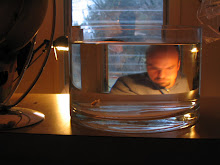Sunday, May 18, 2014
Opera aperta
And, speaking of finishing: the Rainbow Dragons' spring soccer campaign wound to an end yesterday, with an enigmatic 1-0 victory over the red team that featured, to be blunt, rather nonchalant refereeing and a single shot on goal. One of our players notched the only tally of the game when he displayed a piece of nifty footwork and then slid the ball into an inexplicably empty goal, capping what can only be characterized as a complete breakdown in the opposing team's defensive logic. A few minutes later, the kids were all holding boxes of raisins and fruit juice, league badges were distributed, and players began to drift towards cars with their fathers and mothers.
Not an uncommon ending, perhaps. According to Max Graf, in his very colorful psychoanalytic 1946 book Composer and Critic, on the same day that Richard Wagner completed "The Flying Dutchman," he wrote his mother for the first time in years. Had he seen, perhaps, in composing a work that related to his own childhood, "the large bright eyes of his mother resting upon him?" Perhaps. Certainly, the Rainbow Dragons, if they had looked up from their raisins, could have seen the bright eyes of their parents, too (and at least a few digital cameras, as well). One form of closure involves a return to the arms of the parent.
But wait! Because Umberto Eco is here to remind us that many modernist works are characterized by something other than complete closure. Writing in the early 1960s, he noted (in "The Poetics of the Open Work") that "A number of recent pieces of instrumental music are linked by a common feature: the considerable autonomy left to the individual performer in the way he chooses to play the work." Eco had in mind compositions by Stockhausen, Luciano Berio, and Henri Pousseur - but in fact his point was a larger one that encompassed, as well, the work of James Joyce and Alexander Calder. "Every performance explains," Eco argued, "the composition but does not exhaust it." We hear a version of the score; we see Calder's mobile sculptures in a certain arrangement. But if we returned to the work tomorrow, we could very well encounter a very different set of forms.
And that sounds familiar. For, it turns out, no two photos of the Rainbow Dragons are quite the same:
Which image, then, denotes the end of the season? Each explains it, perhaps, but does not exhaust it. We hold up our badges, and play on.
Subscribe to:
Post Comments (Atom)
.JPG)
.JPG)




No comments:
Post a Comment